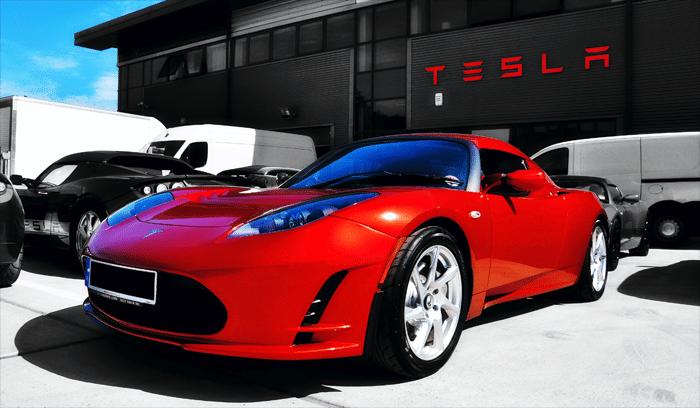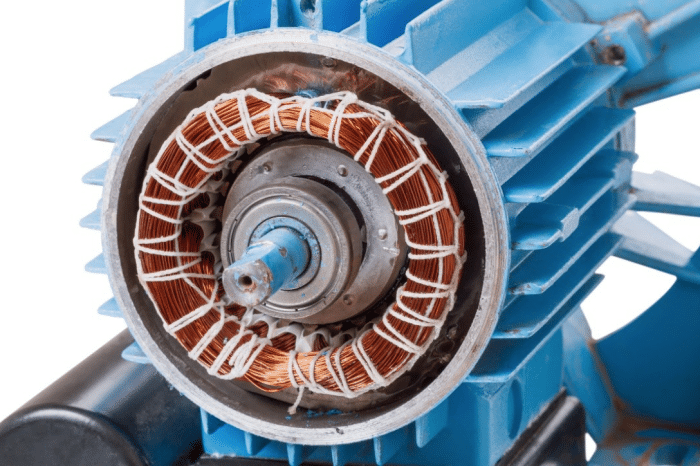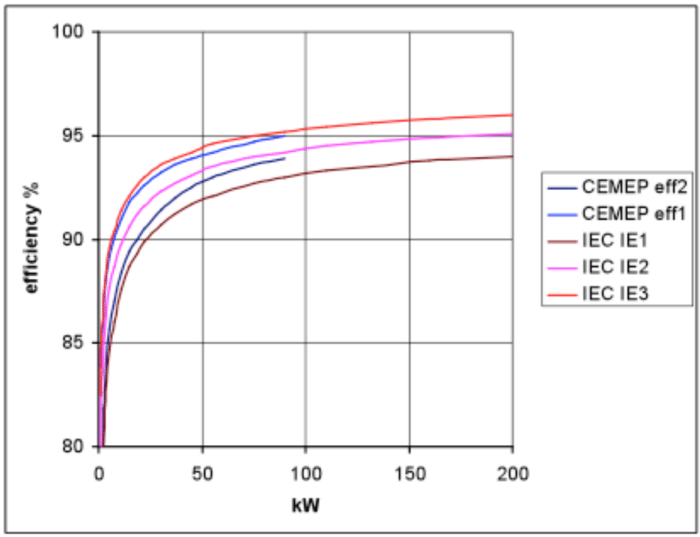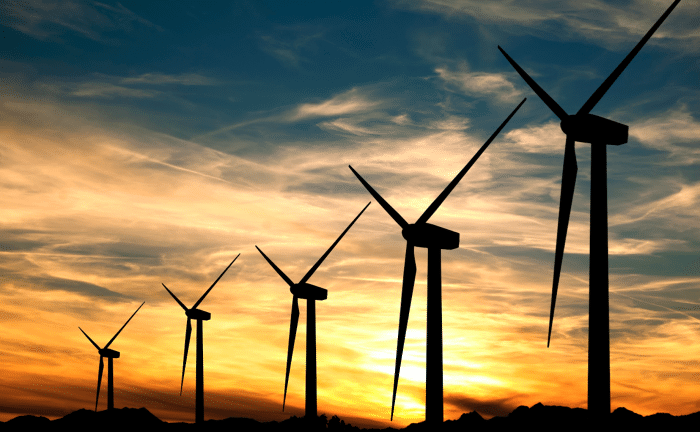Nikola Tesla, familiarized in pop culture by David Bowie in the movie Prestige, is arguably the greatest inventor of all time. And January 7th marked the 75th anniversary of his death. This was the man who produced the first motor run on AC (alternating current) and scared Thomas Edison, his one time boss and mentor, into a fit a paranoia which inevitably led to the famous Tesla/Edison  feud. Nikola Tesla came out of that scrum mentally battered and financially ruined as he wasn’t a fighter like Edison. He was a genius…
feud. Nikola Tesla came out of that scrum mentally battered and financially ruined as he wasn’t a fighter like Edison. He was a genius…
Drama aside, one of Tesla’s approximately 300 patents was the electric induction motor. He designed a power generating system at Niagara Falls, which ultimately powered numerous cities. It was Tesla and Thomas Edison (with Edison promoting DC and Tesla AC) who ushered in the ‘Second Industrial Revolution’ in the late 1800s as mechanical production of electric power began lighting up cities around the United States and Europe. Westinghouse and General Electric made electric motors and generators practical and began selling and installing them en masse. While the designs and uses have evolved, the basic principles of turning electrical energy into mechanical energy have not.
Much More Than Electric Vehicles… Much More
The trendy technology-related conversation these days is around electric motor vehicles, but the applications for electric motors go far beyond the auto sector…

Leading Applications for Electric Motors
In fact, the leading applications for electric motors are industrial fans, machine tools, blowers and pumps, household appliances and disk drives.
From washing machines to drones, sexy Tesla sports cars and even ceiling fans, electric motors power millions of devices and machines necessary for everyday life. In your house alone, it’s safe to bet there are dozens, if not a hundred, electric motors.
Consider this, roughly half of all global electricity consumption is from electric motor-driven systems. According to cleanenergyministerial.org, this amounts to “roughly $565 billion USD per year in electricity costs…”
And that number is going to grow exponentially in the years ahead.
As individuals, the energy we use to move, cook, stay warm, cool down, entertain etc. is a significant part of our cost of living – comparable to many monthly mortgage payments. Furthermore, this rising baseline expense is in addition to the many billions spent globally to build and purchase electric motors every year. Both electricity costs and the number of electric motors sold and in use are growing steadily more than 100 years after Edison’s and Tesla’s novel inventions…
According to KBV Research, the global electric motor market is expected to reach approximately $148 billion by 2022, growing at a 6.09% CAGR. Currently, the leading markets for electric motor demand are North America and Europe. With China pushing for cleaner forms of energy consumption, there is a compelling emerging market story for this already gargantuan market.
Because the global population is skyrocketing towards 10 billion inhabitants, at a time when efficiency and environmental stewardship is front and centre, demand for more efficient electric motors is a natural evolution. From aerospace equipment, electric cars, motorcycles, to household appliances and heating and cooling equipment, the list of applications is lengthy. And the major push, both from governments and the private sector, right now is toward making these motors more efficient. Even a 1-2% improvement in efficiency is a massive win for the industry.
Novel Technologies Drive our Research at Pinnacle
Here at Pinnacle we are targeting novel technologies/materials that can enhance efficiency in electric motors. The social and political support is strongly behind such initiatives, and that can be a beautiful thing for investors.
For startups and venture companies, social and political support can translate into a lower cost to entry, government grant money, willing user adoption and many more incentives… less barriers to entry is always a good thing. Compare that to the fossil fuel industry which is under tightening regulations, more government involvement and lackluster social support. These lead to higher costs of doing business.
N.B. An electric motor is an electromechanical device that converts electrical energy into mechanical energy. Our mechanized world depends on this technology; and the impetus to improve upon it – as we depend more on renewable energy sources, from wind turbines to electric cars – has never been greater.

Electric Motors | A Glance at Global Demand
Like many sectors, growth globally is anticipated to be led by the Asia/Pacific region. Global demand for electric motors is projected to have grown 6.5% to $122.5 billion in 2017.
While $122 billion is nothing to shake a stick at, there are trillions of dollars worth of electric motors operating around the world in an unknown number of devices that will either be replaced or mandated out of existence by more efficient motors in the coming years. That’s what needs to be clearly understood about this sector to truly appreciate the opportunity for investors.
Majors are scrambling to acquire new tech that allows devices to outperform the current status quo. The high-efficiency motors of tomorrow are being bought out today. Any company hoping to achieve notoriety or increased valuations must be able to prove superior efficiency than current offerings. Major government initiatives are pushing this agenda, so the private sector must oblige…
Emerging Markets Crave Energy Efficiency
As China and India continue to expand economically, pressure from the global community to adopt energy efficient technologies is rising.
These two nations have their own domestic pressures to clean up their environment and reduce fossil fuel consumption. However, more important for their economic goals, they have strong international pressure to do so…
In order to increase exports, particularly those linked to UN and WTO countries, China and India, the world’s leading emerging markets, are required to demonstrate stewardship of the environment. From embracing cleaner mining practices, to the adoption of clean energy technologies, they are being forced to comply. This is what we meant earlier about political backing of the sector. Whether countries want to be more energy efficient or not, they don’t have much of a choice.
N.B. According to Freedonia, regional electric motor demand was expected to climb 7.9 percent per year to $74.4 billion by the end of 2017. The vast majority of these gains were expected in China, where demand was predicted to advance at a 9.1 percent annual rate, tied with India for the fastest pace of increase of the major markets in the world.
“The market is expected to grow further due to the widespread adoption of electric vehicles among people in various countries. Electric motors can be segmented into different types based on either their output power or on the basis of their type. The most widely used electric motors are FHP based on output power and AC motors based on type of electric motors. Electric motors are now being widely incorporated into electric vehicles.”
China Remains Prime Example for Electric Motor Growth Globally
On December 27th, Han Ximin on EyeShenzhen reported that Shenzhen, China, a city with a population of more than 12 million, had transitioned its bus fleet to 100% electric buses. Examples of the rapid and global adoption of electric vehicles, which use electric motors, can be seen in every developed or developing nation on earth. To be clear, we are not specifically interested in, or betting on, rapid EV adoption; instead, we are interested in potential efficiency improvements to the broad electric motor and generator market.
Global Electric Motor Market Heads into 2018 with Momentum
Industry Today published a report titled Positive outlook for global electric motor market in October of 2017. Its subtitle says it all:
“The global electric motor market is looking up with favourable economic conditions, a recovery in machinery production, and premium efficiency designs.”
Goldman Sachs joined Barclays in predicting global growth will reach 4% in 2018. G7 economies are expected to beat GDP projections for the first time since 2010…

What a year to be investing in new technologies… economic growth across most of the world’s leading economies is expanding significantly, and majors are making huge profits while on the hunt for takeovers.
Amazon, for example, saw its earnings per share hit 52 cents in Q3 2017. Thomson Reuters had previously estimated earnings of 3 cents a share. Not just the U.S., but around the world, earnings are surprising to the upside as the economy continues to fire on all cylinders. And when this happens, investment from majors typically takes off.
Global production is expanding across the board. Wages are finally starting to increase in many leading economies and new innovations, specifically in the electric vehicle and machine learning sectors, are captivating imaginations of what our world will look like in a decade.
The electric motor market is ripe for a breakthrough…
Industry Today reported, “According to IHS data, a total of 39.8 million electric motors are expected to be shipped in 2017, with ABB, Siemens and WEG claiming the top three spots as the world’s leading suppliers. Asia is set to account for 42% of electric motor revenue, while EMEA (Europe, Middle East, and Africa) takes 31% and the Americas 27%.”
Furthermore, IHS found consumers are paying 20% more for electric motors in the IE3 efficiency class compared to the IE2 motors. We view this as proof consumers are willing to pay extra today for cost savings and superior performance tomorrow (as well as the social currency that comes with making perceived environmentally friendly purchases).
Major companies have to invest in leading technologies that improve efficiency. It’s just that simple…
Governments are Mandating Efficiency in Electric Motors
While cultural pressure or a gradual transition can take a technological movement far, the outright mandating of new laws and subsidies supporting certain sectors can ramp up interest in a new technology seemingly overnight…
The U.S. was the first to introduce the requirement for IE3 efficiency level motors in 2011, under the Obama Administration. No matter how much Trump wants to promote fossil fuel  development, he can’t stop previous legislation supporting IE3 efficiency. According to Industry Today,
development, he can’t stop previous legislation supporting IE3 efficiency. According to Industry Today,
“In 2015, the European Union passed legislation that 2.5kW-375kW electric motors must reach IE2 if they have a variable frequency drive; otherwise, they must reach IE3. In 2017, this requirement was extended to electric motors in the 0.75kW-7.5kW category.”
Furthermore,
“By 2020, the EU plans to require IE3 efficiency for all motors in its Lot #30 Proposal. IHS does not expect US and EU requirements for IE3 efficiency class motors to restrict the global IE2 motor market before 2020, however, as the majority of regions still accept IE2 motors.”
Check out the efficiency comparison on the below graph:

Renewable energy adoption has gone global, including in China – the world’s second biggest and fastest growing major economy. In fact, you could say China is leading the world in renewable energy. It’s home to, by far and away, the largest wind farms in the world.

The majority of wind turbines utilize a low rpm electrical generator for converting mechanical rotational power produced by wind into usable electricity. While many problems are associated with wind turbines, most notably what happens when it isn’t windy and distributing power; these problems and others are being improved upon. Ultimately, the more efficient the motor, the more viable these types of energy sources become. The shift, and billions of dollars in R&D associated, to higher efficiency electric motors and generators has now gone into 6th gear…
Empowering Motors reported in September,
“In 2016, IE2 motors accounted for 35% of the global low-voltage motors market. By 2021, IHS predicts this share to grow to 43%. IE1 motors, meanwhile, are gradually being phased out due to the increased focus on efficiency in Western Europe, North America, and China. Shipments of IE1 motors reduced significantly between 2014 and 2016 from 44% of the total market to 38%. By 2021, this share is expected to drop further to 24%. The fastest growing class is IE4, which is predicted to grow from less than 1% in 2016 to 2% in 2021.”
Siemens outlines the superior efficiency of its IE4 motors below:
Check out Siemens’ YouTube video promoting IE4 super premium efficiency motors below. “Maximizing energy efficiency” along with “minimal operating costs” and “security for the future” are the key taglines associated with the new motors.
While these improvements are notable, we are looking for breakthroughs that have the potential to win global recognition and be commercialized quickly (between 2018 and 2020)… these are the types of inventions that can garner the support of the media and masses and potentially return 3, 4 or even 5 times investors’ money.
Stricter regulations mandating energy-efficiency have spurred technological breakthroughs in the electric motor market over the past few decades. We are entering a hyper-improvement period as companies pour billions into more efficient methods of generating electric power and converting it.
Buyout Potential | A Must Have in Small-Cap Speculation
We’re not interested in a company or sector unless majors operating in said sector are racing to improve the current standard. In other words, we need to see robust competition and money flying around the space. We want to see multinationals suffering from FOMO (fear of missing out). The electric motor and generator space have these components and are responsible for some of the largest buyouts in 2017.
N.B. On February 1st, 2017, Japan’s Nidec Corp. completed its acquisition of Emerson Electric’s motors and electric power division for $1.2 billion.
Johnson Electric Holdings is a global leader in electric motors and motion subsystems which has also been actively buying companies in the space for years.
In short order we plan on introducing our next featured tech play in the electric motor space. 2017 was a big year at Pinnacle, as many featured companies, past and present, touched new all time highs; and we aim to build on that success in 2018 by working with astute management teams running well-prepared companies with innovative technologies.
All the best with your investments,
PINNACLEDIGEST.COM
P.S. If you’re not already a member of our newsletter and you invest in TSX Venture stocks, what are you waiting for? Subscribe today. Only our best content will land in your inbox.




